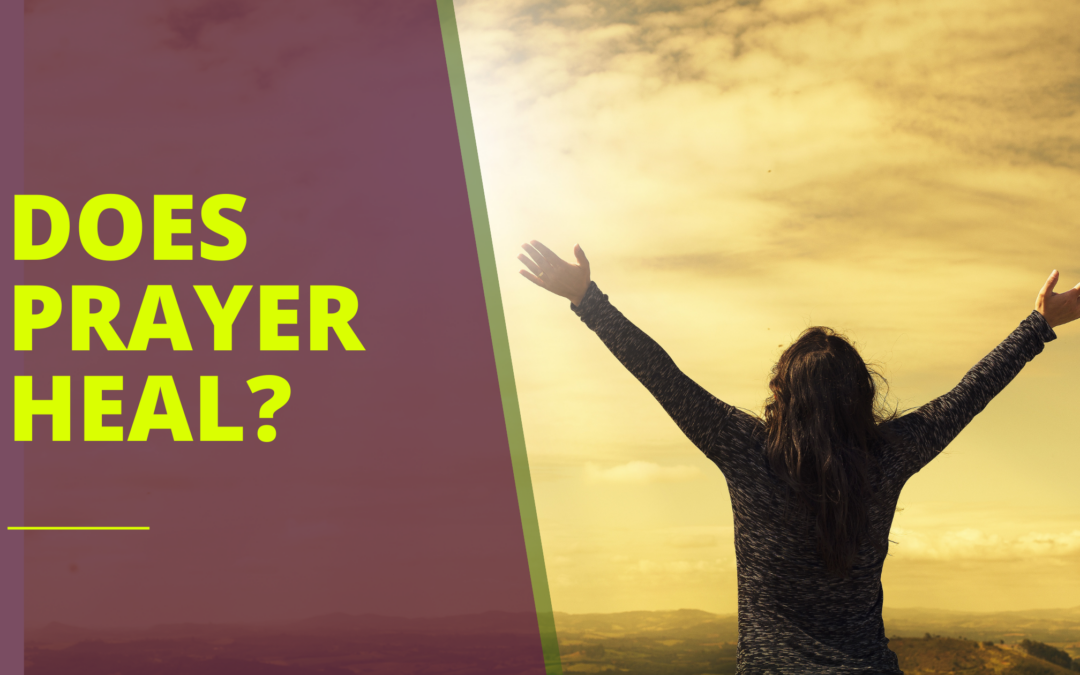Does Prayer Heal?
1. Prayer results in 20% Better Recovery Rate
A recent study published in the journal, “Psychological Medicine” suggests that prayer may be more effective than traditional physical therapies at healing problems. The study found that people who prayed for their health had a 20% better recovery rate than those who didn’t use prayer.
The study was conducted by Dr. Gregory Bernet and co-authors from the University of California at San Francisco. The researchers recruited 75 healthy adults from 16 countries, who completed the “Mental Health Follow-up Study” (MHFS) questionnaire.
2. Scientific Evidence for the Physical Healing Power of Prayer
There is a plethora of scientific evidence for the healing power of prayer. However, not much has been studied in regards to the specific mechanism by which prayer affects the body and soul.
Psychologist and author of “A Guide for Evolving Beyond Mind Control” Dr. Jean Twenge argues that “there is no spiritual “other” to seek out or escape from when it comes to physical illness.
I believe that this is because, as we are all interconnected — and therefore, can be healed — it makes sense that every part of our physical bodies and minds can be healed through spirituality.
Twenge’s book was first published in 2008, but re-released in 2014 with a new introduction by author James C. Scott (author of “The Art of Not Being Governed: An Anarchist History of U.S. Government”) who explains his perspective on spirituality and how it helps us inhabit our own lives more fully than we would have otherwise been able to achieve without religion:
“The very fact that we cannot be cured by our own medicine suggests that there must be something essential about us as persons that cannot be medically or socially defined.
If this is true, then it follows that one way or another all human beings are naturally religious; they have been born into a religious tradition.”
3. Psychological Evidence for the Mental Healing Power of Prayer
Prayer relieves physical illness by removing the tension or pressure that causes the ailment. But what if spiritual healing can do the same? In a 2008 study titled, “Spiritual healing: Where do we stand?” researchers examined what they call a “double-blind” randomized controlled trial (RCT) of prayer versus psychosurgery for arthritis in a group of mostly young women suffering from osteoarthritis.
They found that prayer helped reduce pain and swelling but didn’t heal arthritis itself. The women who received psychosurgery reported less pain and swelling, but also had higher rates of depression, anxiety, and other psychological problems than those who prayed — so it’s one thing to pray for healing and quite another to actually receive it.
4. The Phenomenon of ‘Positive Psychology’
What is it that makes people feel better after praying? And what can science be doing to help us find the answers? By now you’ve surely come across the term “positive psychology,” which if you’re unfamiliar means “psychology of positive emotions.”
The field emerged in the early 1990s and has been a hot topic since. Positive psychology is now a growing subject in most academic fields, including theology.
In fact, through positive psychology we are able to do things like break down what it means to be human, how we can improve ourselves and our communities, develop self-awareness and self-esteem, and so on.
Some of the intense studies on positive emotions are centered around why we feel good. But there are many other benefits of feeling happy. For example: – Decreased cancer risk – Reduced depression – Improved memory – Increased happiness – Improved relationships – Increased social bonding and trust.
5. The Spiritual Power of Prayer
Prayer is a spiritual practice that seeks to bridge the gap between a believer’s physical body and their spiritual self. People in prayer often experience feelings of closeness, oneness with God, and even contact with angels.
It is generally accepted that prayer can heal the body, mind, and soul by moving energy in a positive direction. It is of course possible for a person to heal their own body without the need of other people to help achieve this.
6. Conclusion
“Prayer is a human activity.” — Carl Jung.
So what happens when prayer has been successful? It seems as though many people aren’t able to move on from their payers, but instead go deeper into them, trying to decipher the exact message behind them.
One prayer that seems to have an etched pattern of success is that of prayer for healing, which can be anything from a simple incantation and a touch upon the forehead or stomach area, through to more elaborate forms of prayer such as chanting (in which one sings out words), praying in silence (where one does not talk or speak), and even singing out prayers in public (where many people sing out prayers together).
But let’s take a look at some evidence and studies on the matter of healing:
1) A study by Dr. Alec MacNamara of St George Hospital in London, England demonstrates that as well as recovery from illness, there are positive outcomes associated with prayer:

Eamon Mc Grenaghan has been helping people heal from all forms of emotional and physical ailments since late 2015. His unique gift of Spiritual Insight and understanding of ancient healing techniques allows Eamon to heal from a distance through the quantum field.
Formerly an IT freelancer, Eamon now assists the spiritually aware awaken and tap into their own Divine essence. Your innate spiritual gifts and psychic abilities will be reignited for the purpose of lifting humanity to a higher level of consciousness.


